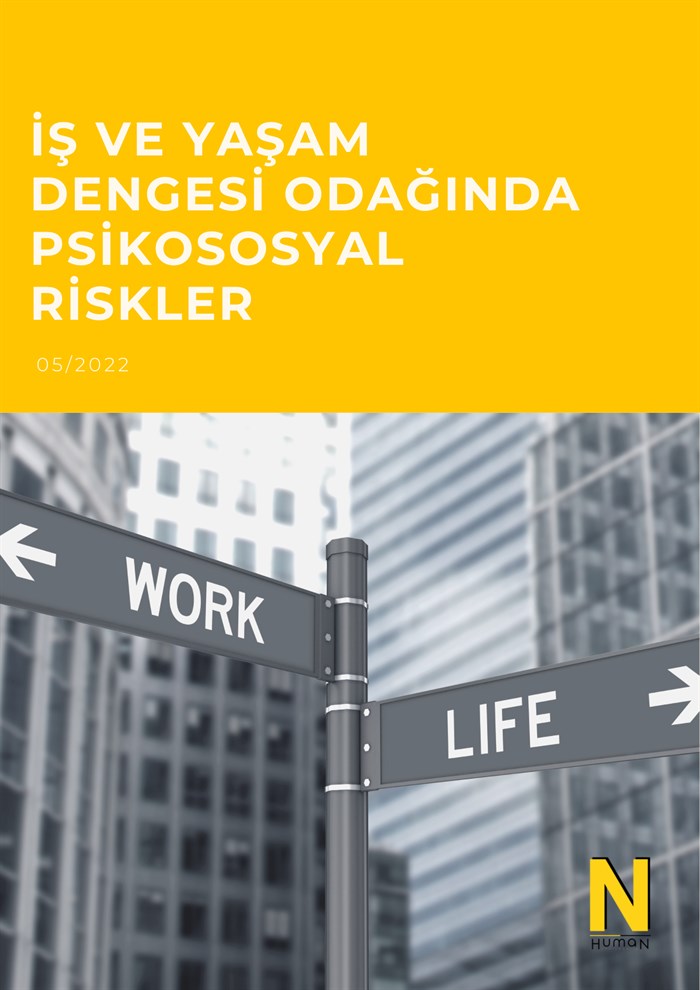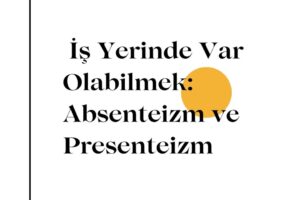
Psychosocial Risks in Focus on Work and Life Balance
In recent years, rapid changes in technology, changes in working life, and the convenience of employees' access to their jobs from home or remotely have brought the issue of work-life balance to the agenda more. The issue of work and life balance was first mentioned in the late 1800s and was used in the 1970s and 80s to express the balance between career and family life. Researchers have done a lot of research on the causes and consequences of work-life balance, which has come to the fore in various ways since then, and these researches have been the subject of many training and awareness studies for practitioners. The issue of work-life balance is an issue that has important effects on workplace commitment, job satisfaction and motivation, and when this balance is not achieved, it brings many psychological and physical health problems.
Work-life balance is a factor that has the potential to influence important workplace issues such as employee turnover, stress, job satisfaction and productivity. Long working hours and highly stressful jobs not only hinder employees' ability to harmonize work and family life, but are also associated with health risks such as increased smoking and alcohol consumption, weight gain, and depression.
Psychosocial risks related to work and life balance in the ISO 45003:2021 standards guide prepared by ISO for the management of psychosocial risks in the workplace:
- job duties, roles, schedules, or expectations that cause employees to continue working in their private time
- the conflicting demands of work and home
- Jobs that negatively affect the development of employees' skills
specified as.
Research on the effect of work-life balance on motivation and productivity has brought employers' attention to this issue, and it has become almost a necessity to create policies and balance strategies for employee health and productivity. Changing time and technology have resulted in employees needing more support and solution suggestions from their workplaces regarding work-life balance. Many organizations today are exploring how they can help employees achieve greater balance by offering a set of family or work-life balance policies and programs.
In the ILO's 2004 report, these strategies are “flex time, job sharing, part-time work, remote work from home, compressed work weeks, work from home schedules, shorter work days for parents, paid maternity leave, death leave, paid leave for patient care, paternity leave, company referral for childcare system, workplace child care, emergency care program for dependents, re-entry plan, school holiday child care programs, progressive retirement, life skills programs, professional counseling, relocation assistance, and work and family resource kit or library” listed as. These strategies have a perspective that supports the difficulties faced by employees in their daily lives and minimizes the psychosocial risks that may occur in the workplace.
The value placed on the psychological health of the employees by the workplaces that use these and similar strategies is also prominent. The value given to the employee and any workplace practices that will support the well-being of the employee will positively affect the motivation and commitment of the employee towards his work, as well as contribute positively to productivity and efficiency. It is seen that work-life balance strategies positively affect employee satisfaction and loyalty, and contribute to production and productivity in terms of the organization.
In order to define work-life balance programs, create strategies and disseminate them at the level of all employees, it is necessary to establish standards suitable for the culture of the organization.
In these standards, the contribution of both the employee and the organization will be valuable. Organizations are responsible for developing good practices that support employee well-being, while employees are responsible for doing more to protect their boundaries.
References:
ISO. (2021). Retrieved May 16, 2022, from https://www.iso.org/obp/ui/#iso:std:iso:45003:ed-1:v1:en
Nam, T. (2013). Technology Use and Work-Life Balance. Applied Research in Quality of Life, 9(4), 1017–1040. https://doi.org/10.1007/s11482-013-9283-1
Raja, S., & Stein, S. (2014). Work-Life Balance: History, Costs, and Budgeting for Balance. Clinics in Colon and Rectal Surgery, 27(02), 071–074. https://doi.org/10.1055/s-0034-1376172
International Labor Office. (2004). condition of work and employment programs: staggered hours scheme. information sheet, International Labor Office, Geneva.
Haddon, B. & Hede, A. (2009) Work-Life Balance: In Search of Effective Strategies, Conference Paper



